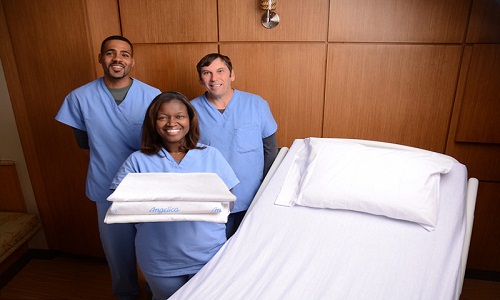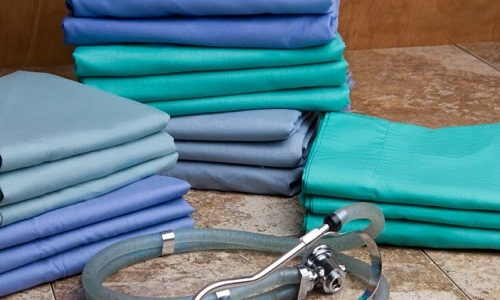"Acton points out, every time there are new technologies or new additives in the linen, they don’t really consider, for example, the flatwork department. Sometimes it’s just trial and error to deal with some of the issues that arise. Mangini recommended developing a close working relationship with vendors before a high-tech linen product gets into a healthcare system. Testing brings up another area that was discussed by the panel: Do high-tech healthcare linen really work? The panelist felt, testing hasn’t been done yet."

Linen processing in the healthcare industry is changing. The sheets, gowns and other products used by healthcare facilities were all once made from traditional fibers. Today, those fibers are going high-tech. Vendors are creating linen with antimicrobial properties using a variety of processes and materials to help combat hospital-acquired/associated infections (HAI).
Linen innovations in healthcare textiles

The industry however is just in the initial stages of this new technology, and there are several factors that healthcare facilities and laundries need to consider before investing in these new linens.
These considerations were discussed at a panel at the recent ‘Clean Show’ during an educational session titled Going Hi-Tech: Emerging Textile Technologies. The panel included: James Mangini, Director of Linen Services at Maine Medical Center, Ty Acton, Global Sales VP, Tingue, Brown & Co, Fontaine Sands, Associate Professor at Eastern Kentucky University, Joe Scully, President, In Textiles LLC and Doug Story, VP Corporate Support, Gurtler Industries.
According to Scully, from a textile manufacturer’s point of view, the proper antimicrobial technology is the “holy grail. He says that there are many different types of technology out there, but he thinks the ‘holy grail’ has been found yet. There are two types of applications of antimicrobials to textiles, in the manufacturing process. Scully says that one is inherent, wherein the antimicrobial agent is introduced into the synthetic polymer prior to the extrusion of the fiber. The antimicrobial agents last longer on the inherent side, typically, but it is more expensive. Scully says that the cost of production with the chemical used on the linen could be an additional 20-30 per cent.

Acton points out, every time there are new technologies or new additives in the linen, they don’t really consider, for example, the flatwork department. Sometimes it’s just trial and error to deal with some of the issues that arise. Mangini recommended developing a close working relationship with vendors before a high-tech linen product gets into a healthcare system. Testing brings up another area that was discussed by the panel: Do high-tech healthcare linen really work? The panelist felt, testing hasn’t been done yet.
Story said the EPA (Environmental Protection Agency) has not certified antibacterial products to specific microorganisms. The EPA does look at processes, however, according to Story. In terms of approval, the EPA goes into a plant and asks for the validation of the processes of creating hygienically sanitized or sterile areas. Story pointed out, the EPA wants to be able to follow a piece of material through a plant and, when it comes out the other end and is delivered to the healthcare facility, know that it’s going to be just as clean as it was when it was brand-new or the last time it was washed and certified.
When it comes to hygienically clean linen processes, Sands suggested looking at the plant before looking at the linen. Looking at a laundry’s system, Sands says there are certain things that can be controlled. These include water quality and temperature, amount of agitation, proper loading, the appropriate amount of time and chemicals, and the heat/temperature.












